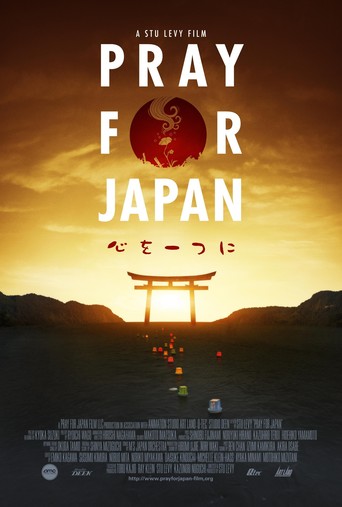



The greatest movie ever!
How sad is this?
The first must-see film of the year.
Just intense enough to provide a much-needed diversion, just lightweight enough to make you forget about it soon after it’s over. It’s not exactly “good,” per se, but it does what it sets out to do in terms of putting us on edge, which makes it … successful?
View MoreThe producer had the chance to tell the entire world about the Fukushima disaster and failed, only mentioning it in a one line graphic. The film was too mechanical and posed. It used the title "Pray for Japan" but only focused on one town in the entire disaster. The repeating notion of solidarity gets old. It is boxed into 4 subjects.The production value is good but its boring and does not really do anything. it seemingly focused only on the positive aspects of the disaster which was strange. I would not recommend it to anyone looking for what truly happen to Japan during that time period... The document is too slanted, its almost too positive, it only captures what Levy wanted you to see, not what really happened.
View MoreThere are countless things that make us so sad and helpless from what happened on Mar 11, 2011 in Japan, but this film shows the strong sides of people in Tohoku with help from selfless volunteers and supports from all over Japan and the world. I brought a bunch of tissues before I went into the theater, but it was not about how sad the event was. 100% of this film was made by all volunteers. Even the theaters are not making any profit on this film so that all the proceeds will be donated fairly help the people in Japan. Courage, bravely, kindness, help, appreciation, resilience, looking forward... all these words belong to this film.
View MoreWas able to see this at the AMC theaters in Torrance, California and was excited to see it. The film is split into four parts talking about Family, Shelter, School and Volunteers. Every story that was told was amazing hear. Of course some were more sad than others so prepare tissues. It's very refreshing to see a documentary like this; showing us how the people in the affected areas are working towards the future and not looking back to the past. Not many people outside of Japan really know how the rebuilding process is going, so after watching this you can have an understanding at what the Japanese people are doing and are still currently doing. I would strongly recommend this film to everyone.
View MoreI enjoyed watching Pray For Japan The movie captured the realness of the Tsunami at hand. It was raw and very real to the audience. It also kept the people's perspective of the Tsunami and the damage real. There was no played up drama or facts that were skewed, all the facts and insight of what happened came from those who were affected by the Tsunami. I loved how they talked about how different sides were affected and how they are working now, which was family, volunteers, school, and shelters. The film also captured the strength of the Japanese culture; it showed the progress and how they came together as a country. They did not treat others unfairly and wanted everyone to have the same resources no matter who you were. The fairness showed throughout the movie especially in the shelters when there was no food or water for days.The family aspect reigned true to the culture, as honoring those who passed but also celebrated their lives. The festivals and trying to bring back the happiness was filled with celebrations in different shelters but also in areas that were affected by the Tsunami. I enjoyed that the most, no one sulked for long; they got back to their feet and celebrated life, culture, strength, and the future. They cried when the Tsunami happened but a year later there are no crying because they are stronger and getting prepared for the future, but also staying strong. They are helping rebuild the community and the culture through this devastation. The film also gives insight and future knowledge for other countries that might be affected by Tsunami's to prepare. It is a reminder that you cannot predict when Mother Nature strikes but you can be prepared for when she does. I also loved the volunteers that came from all over the world to help out and also shared their own culture to help those affected. The Japanese people were so welcoming and thankful. They treated the volunteers and shelter workers as their own family, which was great to see. Overall the movie awesome and it was sad to see the effects again but in the end the movie captured the strength and happiness of the Japanese culture. It also shows the bright future that is there and how through all this, this country came together and they all worked as one.
View More